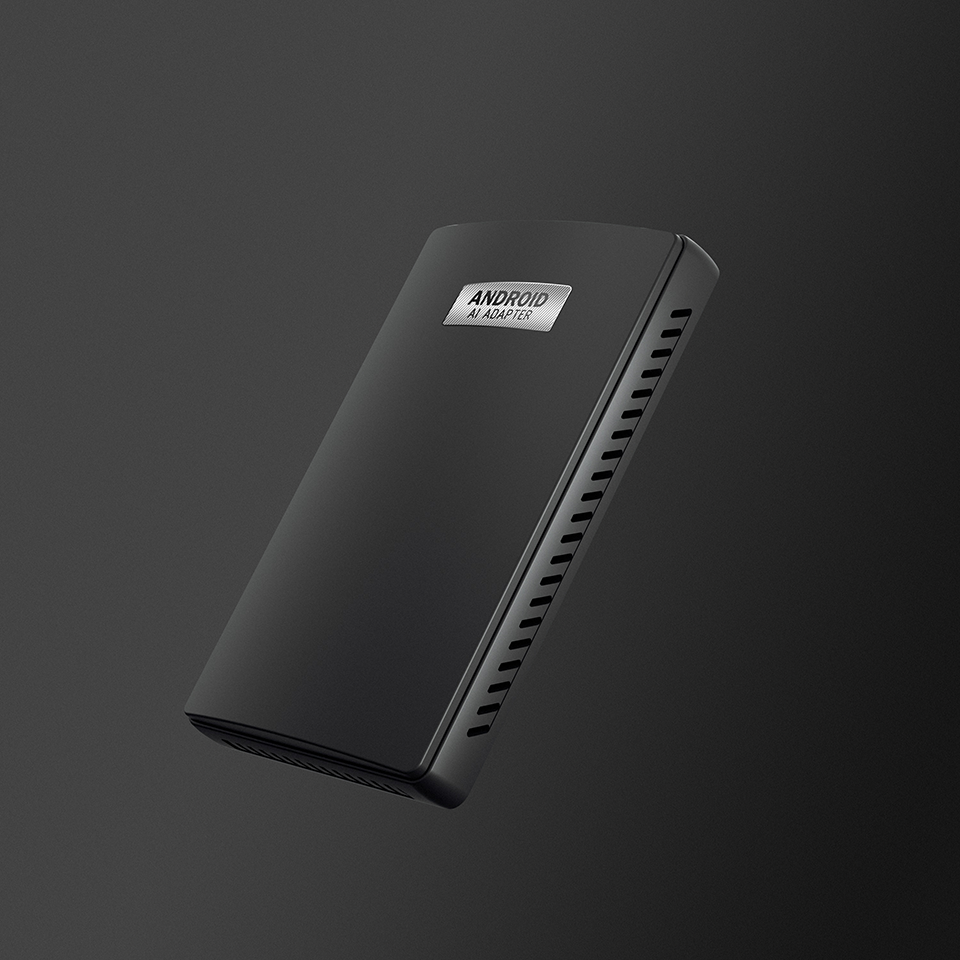Google has more data resources than Apple, giving them more advantages in car app scenarios.
The annual Google developers' conference, Google I, opened again on May 7, no doubt a big event for Internet and technology developers. But given the growing combination of cars and technology in recent years, we also found some of their future revelations about the layout of the automotive sector at Google's conference.
“Hey Google, let's drive”
We are no stranger to Google's voice assistant Google Assistant, which is now integrated into Android Auto and Google Maps, and now Google has added a new Driving Mode driving model for it and will meet us this summer.
If you've used Google's Android Auto, you'll find that they're very similar, and the entire interface is also Google Android's minimalist style, especially for Android users, which is very easy to get started with. However, in many similar functions compared to Android Auto.
The entire mode is embedded in full Google voice interaction, so you can use navigation, entertainment, phone and other functions in driving mode as if you were talking to Google Assistant. Activating this mode of driving is more natural, when Android phones with Google Assistant are connected to Bluetooth in the car, just say "Hey Google, let's drive," more like you're talking to your own "Jarvis." For safety reasons, the current boot mode only supports voice control and may be added at a later date Touch on.
After startup, a specially customized display interface will appear on the phone screen, which Google officially calls "considerate design instrument (thoughtfully designed dashboard)", which can display driving information, contacts and the most important personalized recommendations. Suggestions for navigation will be based on your calendar itinerary, daily route, or recently frequently searched locations, and entertainment systems will make recommendations based on your preferences and recent listening content.

For example, there is a restaurant reservation on your schedule, a movie ticket information, and a reminder of the location of the event will be displayed on the screen. If you do not answer the call, Assistant will advise you to call back. The system can also seamlessly connect media that are playing before you get back on, such as music played before you get out of the car or just play at home.
All this will be done by voice, no need for you to do it at all, driving safety is still the most important. And since it's driving mode, Google wants users to only need to see maps most of the time, so maps will almost always be displayed on top of the screen, and others like music players will "shrink" below the screen. Call reminders also pop up gently from the bottom without affecting the navigation map.
At the same time, the communication between, Google Assistant and vehicle is simplified at Google I / O conference, and the original multi-step instruction is combined into one or two instructions to improve the efficiency of human-computer interaction. For example, you can just say "Hey Google, turns on the air conditioner and sets the temperature to 24 degrees" without having to say two more instructions. Mercedes-Benz models equipped with the Blue Link's modern, Mercedes Me Connect will be the first to experience these features.
Google imagines the Google Assistant driving model as a mobile version of the dashboard or central control screen, the equivalent of a phone-side Android Auto, especially a combination of mobile bracket. It is designed to make up for users who do not have large screens or are not equipped with Android Auto, and more importantly to provide navigation. The system will default to Google Maps and Waze, which Waze, acquired in 2013, will have the same features as Google Maps in the coming weeks.
The night before, it coincided with Android Auto updates.
The day before the Google Ido conference, Google also updated Android Auto with new UI and many new features, which are expected to be officially launched this summer.
First, the bottom navigation bar changed from the original row of static buttons to the home key on the left, a dynamic function bar and fixed notifications and voice on the right. The feature bar is more like a navigation bar after another application is minimized, and the system will automatically select an application to display below as a second priority, depending on how often you use it. And some shortcut buttons will be displayed next to the icon, and of course you can also select other applications from the menu to display below.
For example, if the system finds that you often use Spotify, it will put Spotify below and display play / pause, previous / next and other commonly used keys. So while the main interface shows navigation, you can operate Spotify to play music through the small function bar below, without really switching to the Spotify application without affecting the navigation application. Similarly, if your main app is music but navigates at the same time, the function bar below displays the icon for the map and displays the next navigation prompt next to it.

This not only displays more content on the same screen, but also has the greatest advantage of greatly reducing the number of buttons entered or clicked during the interaction, eliminating a series of actions for switching applications and looking for buttons. This greatly reduces the distraction of the driver's attention in the course of operation.
At the same time, Google has redesigned the Notification Center to allow you to view missed calls, messages, warnings, etc., and we can see that Google has raised the priority of notification from the fact that it is fixed to the main page. In addition, the new version of the system also adds dark mode (which can compete with the dark background of Apple's Carplay) and wide screen mode (interface optimization for ultra-wide screen on the car).
At this point, since Android Auto, has to mention that Google's front-loading system, Android Automotive OS, will first appear on Volvo's Polestar 2. In the vertical screen of Polestar 2, the same style of UI is divided into four areas, like four small screens that display maps, phones, entertainment, driving information, and so on, with Android-like dominant bars on top. At the top of the screen is a drop-down menu that includes notifications and settings, and the bottom pull-up controls the air conditioner.
Android Automotive OS can be seen as the integration and upgrade of the entire Android Auto and Google Assistant driving mode, which has a more comprehensive UI and functionality. At the same time, more Google ecological applications are integrated into the car. Polestar 2 is Google's first step into the front-loading system, and with the help of Android Auto and Google Assistant, the subsequent development and progress will certainly be faster.
Different data routes from Apple
When it comes to Google, you naturally think of Apple. In addition to autopilot, intelligence is still competing in both similar and different fields.
As two giants outside the traditional car manufacturing industry, Google and Apple have chosen the same way to "migrate" their mobile phone products because of their advantages in smartphones. The first is to do only software, not rush to intervene in the production of hardware, and then use the ecosystem that has been formed on the mobile phone to shoot the mobile phone reflection system into the car system through the interface on the car. And reduce the cost of getting started with UI design and operating logic similar to mobile systems.

Apple's layout on cars was earlier, and the car system first appeared in front of us on the 2013 WWDC, Android Auto, which was officially released in 2014. Globally, both companies are actively looking for partners to connect to their own systems on various brands of cars, and there are also many brands of cars that support both. But as Google withdraws from China's, Android Auto, it is indeed awkward in the domestic market, giving Carplay a lead in the country.
But because of an important difference between the two-an open source and a closed loop, their direction is bound to be different. Intuitively, this reflects that the system has a completely different policy for third-party applications. Apple's system is more stable, but the number of apps is small and the update is slow, and Google has a more diverse range of apps. However, the application quality and system stability are not easy to control.
Google has dabbled in services and apps across the market, with a focus on Apple Ecology, but Apple's data source does not have an Android ecosystem, or, to be exact, only their own devices. Google, in particular, also has more powerful mapping and location services than Apple. So Google has more data resources than Apple and has enough data analysis power to give them more advantages in car app scenarios. So in the future, it will become a data-based service provider, rather than taking its ecology as important as Apple.
summary
It is not difficult to find that both Google assistant driving model and Android Auto update are in time this summer, behind the big wave of updates is Google's push for on-board interconnection and intelligence. But more importantly, these new features in the field of auxiliary driving will be necessary when autopilot arrives in the future, and they really reflect the overall situation of Google autopilot.
At the same time, in June, Apple will hold this year's WWDC, which is traditionally a software conference related to systems such as iOS,MacOS, but the same is true of Google I. So, will Apple, which has not updated its Carplay for a long time, actually have something new?


.png)
_副本.png)
